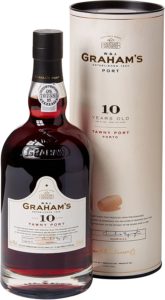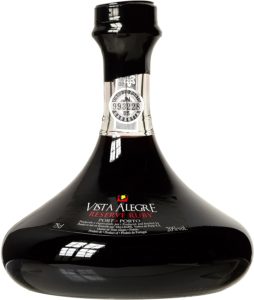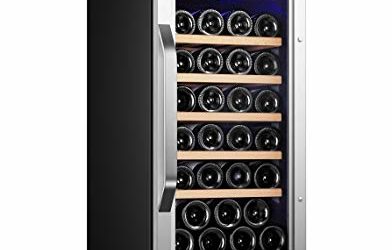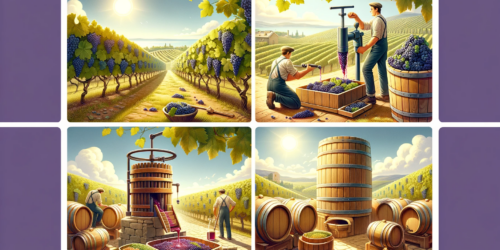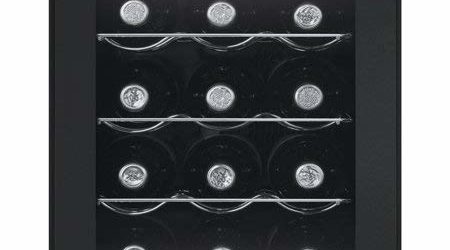6 Best Port Bottles | UK Buyer’s Guide & Reviews
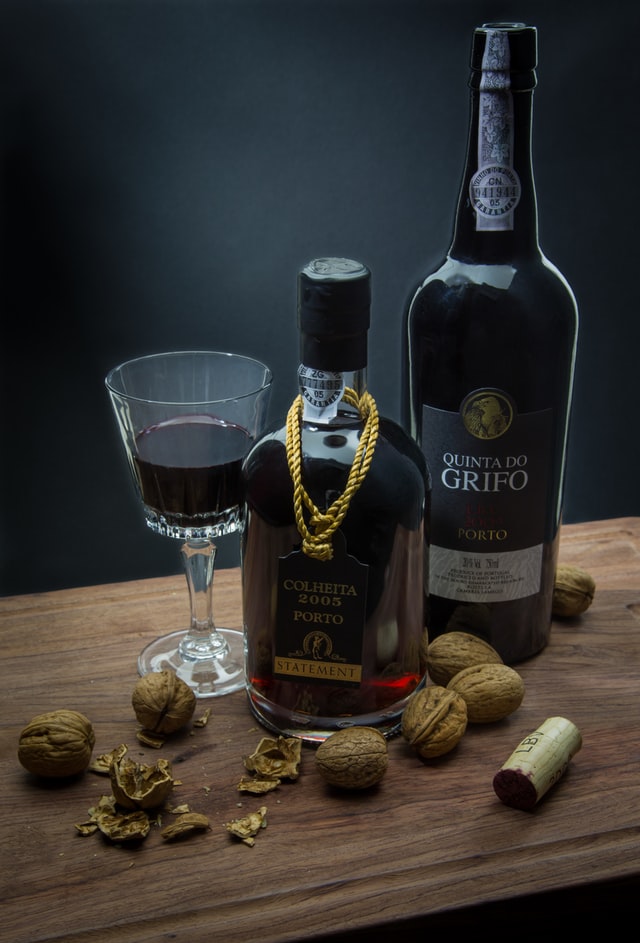
Even if you’ve still got questions as to what exactly it is, chances are you’ve enjoyed a glass or two of port in your time. It’s a staple of celebratory meals, a regular partner to cheese platters and post-dinner delicacies, not to mention a welcome sight during the festive season in many a home. In short, port is a fortified variety of wine that boasts a fuller body and richer flavour profile. Traditionally, a bottle of the good stuff has been broken out at the end of a meal. Whether enjoyed in its own right or teamed with artisan cheeses and other savoury specialities, it’s the refined full stop to any feast.
Port experiences a surge in popularity
Historically, port has been produced within Portugal and enjoyed by millions across Europe. However, its appeal has began to broaden, with a growing appetite for it across the Atlantic. Nowadays, premier port isn’t as difficult to find as it once was, with many a wine menu boasting multiple options alongside its conventional wine stock. For those looking to invest in a bottle or two to enjoy at home or bolster their cellar collections, there’s also a growing marketplace to be found online. However, as the list of options broadens and standout varieties become increasingly affordable and accessible, it can be hard to know what to look out for when making your selection. Our buying guide is on hand to help you identify the best possible bottle for any requirement, whether you’re after something simple to add to your home bar basics, searching for something special, or gearing up for gift-giving season.
The origins of port
It’s often a harmonious meeting of cultures that results in the emergence of something new. However when it comes to port, it was conflict and war heralded in its creation. Back in the eighteenth century, England and France were almost constantly at odds with each other on the battlefield. With the English Channel blockaded and regular shipping lanes made redundant, it soon became nigh on impossible for the likes of Britain to continue importing produce like wine from France and the European mainland. In a time of crisis, wine connoisseurs in Britain turned their attentions to elsewhere to satiate their appetites. That elsewhere was Portugal, a wine-producing territory and an ally of Britain at the time. However, the lengthier transit times of shipping produce from Portugal to British shores meant steps needed to be taken to keep the wine in question from spoiling. This is how port as we know it today came into being.
In an effort to minimise spoiling, wines bottled for export out of Portugal were fortified with an added measure of strong alcohol. The spirit in question was brandy, which not only increased the overall alcohol level of the wine, but also had other unprecedented effects. For one, the ongoing fermentation process was halted, which meant residual sugars were left within casks and barrels. This is the reason why port has its distinct sweet flavour that has become its savoured signature.
How is port produced today?
The winemaking industry in general is one that holds dear traditional methods and production techniques. Port production in particular is known for its commitment to continuing centuries-old practices that have never been bettered. Unlike conventional vineyards used in other winemaking endeavours, vineyards grown to yield grapes for port production are often sheltered and terraced. This is so the plants themselves and the soil in the vicinity of the roots maintains an overall higher temperature during colder spells and throughout the night, a boon to the eventual flavour of the grapes harvested to be used in port. While this sheltered start to life certainly has an influence on the final product, it poses some challenges when it comes to harvesting grapes. For a start, the layout of port grape vineyards means machinery can almost never be utilised to harvest grape crops. The only alternative is that grapes are picked by hand. This is time-consuming to say the least, producing comparatively smaller harvests when held up against grapes used in more mainstream wine varieties. As a general rule, hand-picking of grapes to be used in port wine occurs over a six week harvesting period.
When it comes to getting the recipe in motion and preparing the ingredients, time-honoured tradition is once again the go-to. Port grapes are crushed underfoot. However, don’t think these delicately managed raw ingredients aren’t handled with the utmost care. The manual crushing of grapes is a relatively gentle and reserved affair, with care taken to ensure that grape seeds aren’t damaged and broken whenever possible. If they were to be damaged, this can serve to spoil the ultimate taste of the port produced. After grapes have been crushed manually, the pulp is sieved away and a measure of harder alcohol (a grape spirit) is worked into the concoction to give the overall alcohol content of the beverage a significant boost. As a general rule of thumb, ABV levels are raised to around 20-22 percent of the overall volume. Once this has been done, the port-in-progress is transferred into oak barrels. From this point on, it’s time for the ageing process to perfect the port in question.
Key varieties of port
It’s easy to get lost in the wealth of variety available online today, but when it comes to identifying available port choices, you only really need to think about a handful of main varieties.
For most people, ruby port is the initial introduction to the fortified wine and an easy choice. It’s arguably the every-man of the port portfolio, with a very palatable taste that makes it an easy-to-drink option. Ruby port is made from several distinct varieties of grape, all of which will have been picked within the same year. When it comes to ageing, ruby port tends to have spent a minimum of two years in oak barrels or more contemporary steel vats. It’s rare for an average ruby port to spend more than three years ageing before being sent out to the market. When cracking open a bottle of ruby for the first time, make sure you pay some attention to details specific to this steadfast variety. Once opened, it makes sense to consume a ruby port within a day or two. Chances are, it’s not going to maintain its flavour and palatability for much longer than that. Because of the need to finish it quickly, a bottle of ruby port is a good option for parties and get-togethers when you know you’ll have multiple guests sat around a table who’ll have no trouble raising an after-dinner toast with a glass of port in hand.
Wondering about white port?
Compared to other varieties, it’s a new kid on the block, first arriving onto the scene in the 1930s. There’s a few key differences between this white variety and its ruby red cousin. For one, only green grapes should be used in the production of a white port. Produced to present a dry or sweet profile as their signature, there isn’t much else different in the manufacture of white and ruby ports. So long as that green grape rule has been adhered to, the same processing methods apply. However, when it comes to ageing, things vary again. An average white port can be aged for periods of up to a decade before being pulled from the vats and bottled for the consumer market. Like many white wine varieties, white port has its own place come mealtimes and feasts. It’s more often than not cracked out as a pre-dinner aperitif, while its green grape backbone lends itself well to chilled temperatures.
Other than ruby and white ports, you’ve tawny varieties to consider. With tawny port, the ageing process is the defining difference that sets it apart from its simpler siblings. Once processing has finished and the concoction ends up in the cask, tawny port can be left to age for up to forty years or longer. This lengthy maturation phase not only infuses oak character into the port flavour profile, it ensures its distinctive pale, tawny tint. Even once tawny port has been bottled, many a port lover prefer to keep the ageing process going to further refine the eventual tasting experience. It’s not uncommon for newly sealed bottles to be left to age for a further decade or two. So long as you’re dealing with a tawny port that’s undergone adequate ageing, you can enjoy a fortified wine that will keep comparatively well once the bottle has been opened. After opening, you can enjoy top-tier flavours for around a month. This makes it an ideal choice for those looking for a port for personal consumption that can be staggered. It also makes it a suitable candidate for decanting should you want to split your tawny between the main bottle and a separate serving vessel.
Best Port Reviews | 2020
Need some inspiration? See below for our breakdown of six of the best bottles of port you can buy online right now.
Grahams 10 Years Old Tawny Port
If you’ve had your fill of white port and relished more than enough ruby, this tawny port classic is certainly worth marking as your next acquisition. Grahams 10 Years Old Tawny Port brings the reassurance of an established specialist, with plenty of finesse and flavour to warrant such renown. This tawny is made with grapes grown in the mountainous Upper Duoro region in Portugal, perhaps the most celebrated port-producing region on the planet. Wondering what to expect on the palate? It’s a remarkably rich affair, with a more mature fruit profile that doesn’t overpower. Once it’s settled on the palate, expect this one to mellow out and build to a lengthy finish that leaves a delicious linger on the tongue and a smile on the face.
Taylors Late Bottled Vintage Port 2013
Another brilliant bottle from a premier name in port production, Taylors Late Bottled Vintage is definitely worth a look if you’re keen to delve into the delights of vintage varieties. This one makes an instant impression with its rich purple colour, while an enticing nose of jammy fruits and sweet cherry ensure it’s absolutely irresistible. When it comes to taste, look forward to a palate that’s beautifully rounded and smooth as you go, with a backbone that’s all about balance. Take some time to savour the subtle flavours with this beauty, with rich fruity notes like redcurrant and blueberry in the mix.
Vista Alegre Reserve Ruby Port
This refined ruby is worth a second look for the beautiful bottle design alone. Vista Alegre Reserve Ruby Port is a refined choice, with a full-bodied character that packs plenty of fruit-driven flavour. A smooth mouthfeel and sweet tannins ensure the only taste left lingering on the tongue is one you’ll want to relish time and again. The slightly complex finish on this ruby port is particularly noteworthy, ensuring a real bounty for your taste buds to savour. If you’re specifically on the lookout for a quality bottle of port to give as a gift, make sure you give this one some serious thought. It’s very reasonably priced for the level of refinement you can expect here, while the decanter inspired bottle tags on some added value.
Warre’s LBV Port Wine 2004/2007
Warre’s is one of the most established names in port production on the planet, dating back to 1670. With a pedigree like that behind it, you’d be within your rights to expect something special from this LBV offering. Made with grapes hand-picked from centuries-old vineyards and processed via a blend of traditional and cutting-edge techniques, it’s nigh on impossible for this LBV port wine not to stand out. This particular port recipe is produced in one of the most traditional manners possible, with the winemakers intervening as little as possible during the entire manufacturing stage. This full-bodied port is bottled unfiltered after spending no less than four years ageing in the cask, ensuring those dark fruit flavours and mature liquorice accents can really sing on the palate and excite the nose. Definitely one for the more discerning port fan, this bottle will also hold up well over the years. If you’re looking to add to your cellars, this bottle is ideal. It’ll store happily for another decade, maturing in complexity with every passing year.
Fonseca Terra Prima Reserve Port
Good port doesn’t need to cost the moon as Fonseca Terra Prima Reserve Port proves. This lighter port has a very reasonable asking price that won’t send your head into a spin, making it an ideal entry-point for those keen to acclimatise their palate to all things port before parting with more significant sums of cash. It’s a pleasant balance all round, with a medium body that’s an ideal frame for a sweet flavour profile and silky smooth texture. It’s incredibly easy to drink, so a good choice for pouring out between guests gathered around the dining table post meal. What’s more, the organic approach of Fonseca means you’re free to gloat about your green credentials.
Sandeman 20 Year Old Tawny Port
If you’re after something worthy of applause to add to your collection, start with Saudeman 20 Year Old Tawny Port. It’s an award winner for starters, pocketing the bronze award at the 2015 Decanter World Wine Awards. You’ll immediately understand why it earned such an accolade upon tasting. Get set for a rich and refined experience, with elegant fruit flavours led by the taste of apricots, partnered with more subtle nuances like smooth honey, aromatic spices and deliciously sweet vanilla just some of the notes to look out for. Leave it to mellow on your palate for a moment or two and you’ll be able to appreciate the full extent of this intensely flavoured port. Hazelnut and cinnamon are two signature tastes to watch out for, with both inching this tawny into dessert-friendly territory. If you’re after port to pair with sweet treats and after-dinner delights, here’s the answer to your prayers.

